Turtle Tower, or Tháp Rùa, stands majestically on a small islet in the middle of Hoan Kiem Lake, encapsulating the essence of Hanoi’s rich cultural and historical heritage. Constructed in 1886 during the French colonial era, this iconic monument serves as a physical symbol of the captivating legends and storied past of Vietnam. It draws not only tourists from across the globe but also resonates deeply with the local Vietnamese population, who savors its scenic beauty and the profound historical tales it represents.
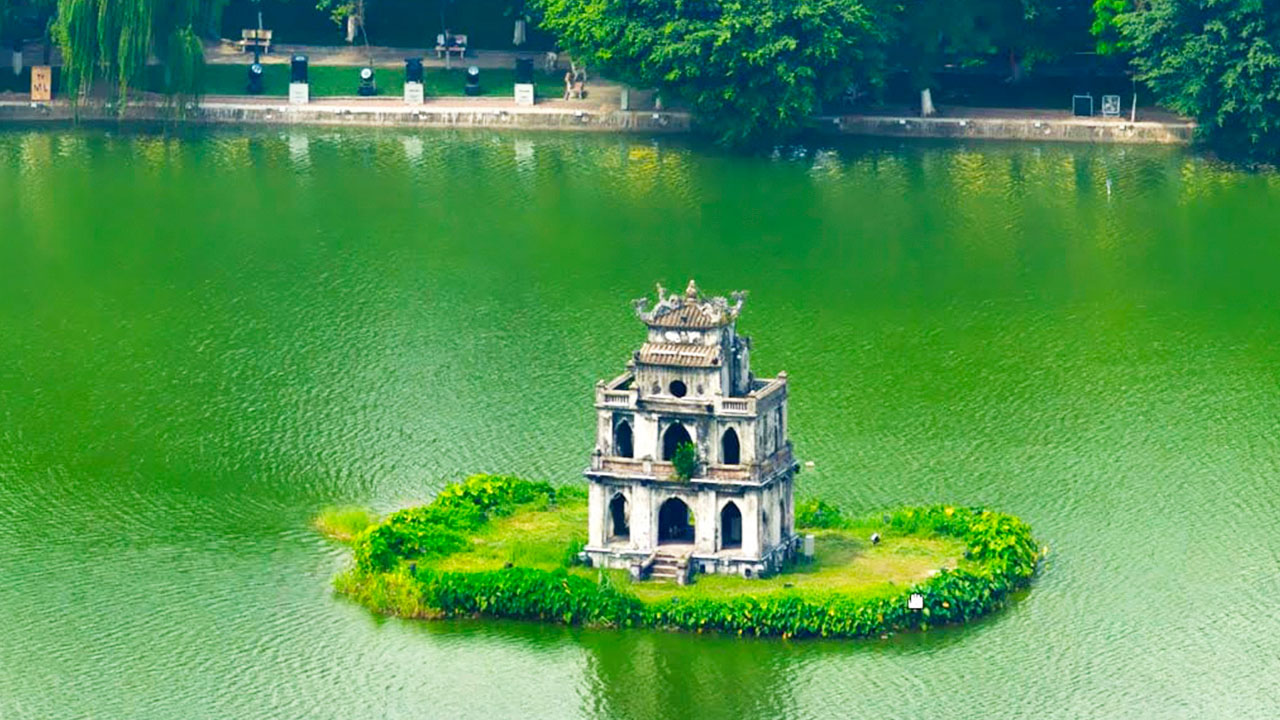
Its serene presence amidst the bustling city underscores its role as a poignant reminder of the past. The elegant mixture of Vietnamese and French colonial designs embodies the broader narrative of Vietnam’s adaptive yet resilient spirit, making it a treasure trove of cultural memories. The intertwining of architecture, legend, and national pride creates a rich tapestry, making Turtle Tower more than just an antique structure; it is a narrative etched in stone and water.
Historical significance of Turtle Tower
The historical significance of Turtle Tower lies in its intricate connection to Vietnamese folklore and national identity. The structure itself commemorates the legend of King Le Loi, a heroic figure credited with reclaiming Vietnam’s sovereignty from Chinese invaders in the 15th century. This legend not only elevates Turtle Tower as a cultural symbol but also imbues it with emotional and historical depth.
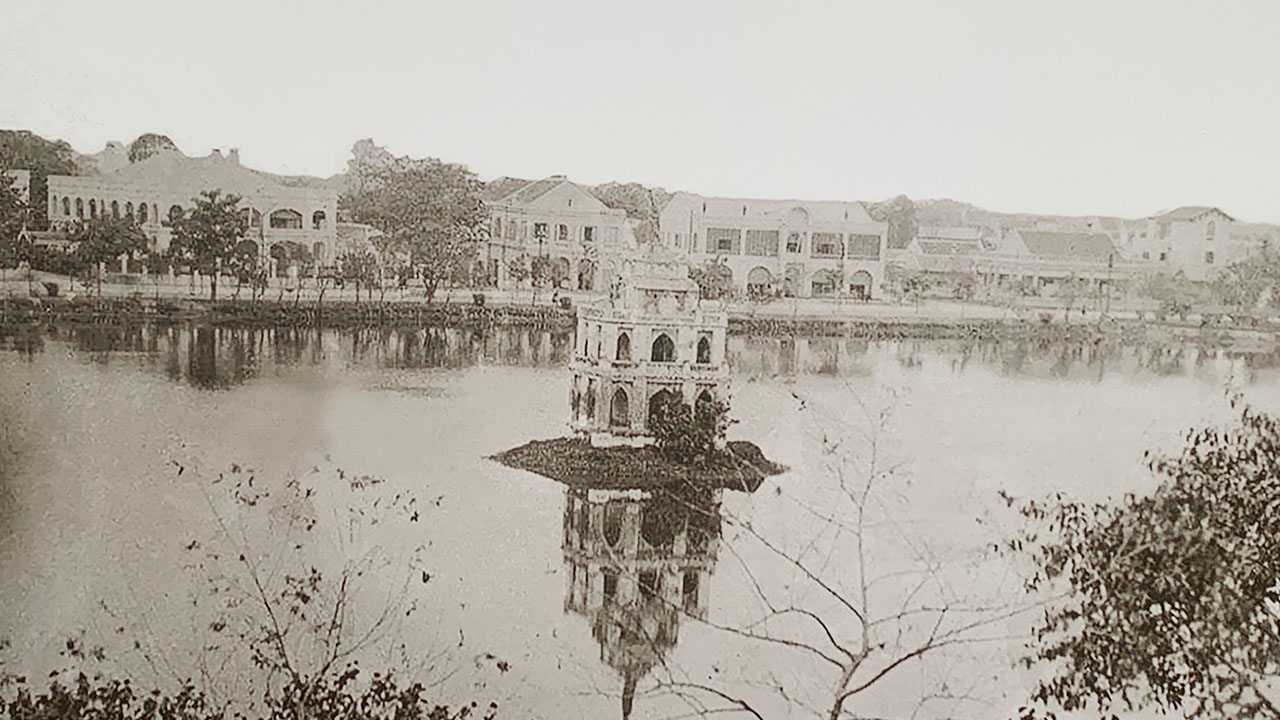
Much like a steady anchor amidst tumultuous seas, the tower stands testament to Vietnam’s resilient spirit and indomitable will to maintain its independence. Its creation during the French colonial period adds another layer of historical richness, reflecting the French influence mingled with traditional Vietnamese elements, thereby symbolizing a nuanced blend of resistance and assimilation. This unique amalgamation renders Turtle Tower a key figure in Hanoi’s narrative, serving as a silent envoy of Vietnam’s storied past and enduring legacy.
Origins of the legend involving Turtle Tower
The legend of Turtle Tower finds its roots in the 15th century, during a turbulent period when Vietnam was under the yoke of Chinese rule. Central to this legend is King Le Loi, a figure celebrated for his valor and strategic acumen, who led a successful revolt against the oppressive Ming Dynasty. According to folklore, Le Loi was bestowed a magical sword by a divine turtle residing in Hoan Kiem Lake.
This sword, imbued with mystical powers, was pivotal in securing his victories and ultimately, Vietnam’s independence. Upon achieving liberation, the king was approached by a golden turtle while sailing on the lake; the turtle asked for the return of the magical sword. Honoring the request, Le Loi returned the sword, and it immediately disappeared into the depths, giving the lake its name, Hoan Kiem, which translates to “Lake of the Returned Sword.”
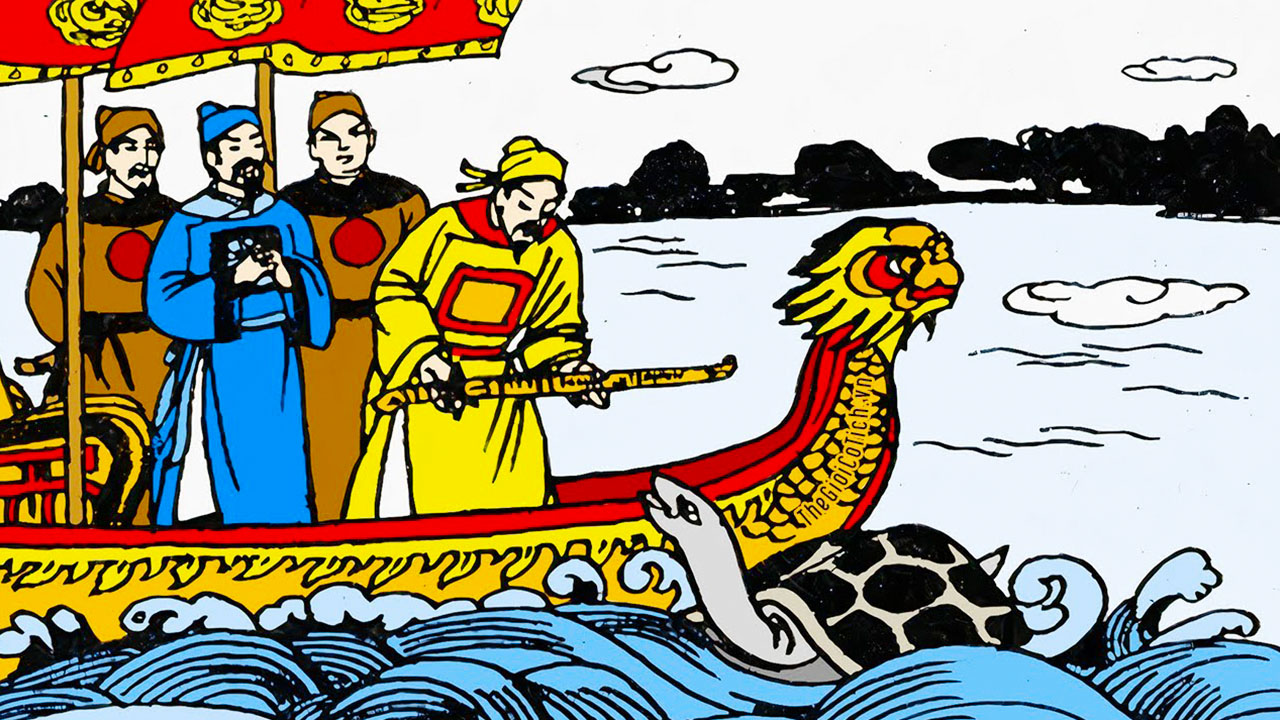
This legend is not just a heartwarming tale; it is laden with rich cultural symbolism. The golden turtle represents wisdom, endurance, and divine intervention, while the magical sword signifies strength and rightful power. In many ways, this narrative mirrors the collective yearning for sovereignty and the ultimate triumph over adversity that the Vietnamese people fervently cherish. The sword, the turtle, and the lake interweave to form a powerful metaphor for resilience, reflecting a deep-seated cultural ethos that survives through generations. Turtle Tower stands at the epicenter of this narrative, immortalizing these values in stone and water.
Much like the legends of King Arthur and the Excalibur, which are celebrated in Western cultures, the story of King Le Loi and the magical sword is a tale of mystical empowerment and moral triumph, resonating deeply within the Vietnamese psyche. These timeless narratives, while steeped in mysticism and legend, provide not only an understanding of historical events but also evoke a sense of cultural pride and identity that endures. The legend of Turtle Tower thus remains an essential thread in the rich tapestry of Vietnam’s cultural heritage, offering a compelling blend of history, myth, and national pride.
Role of Turtle Tower in Vietnamese culture
Turtle Tower holds an iconic status within Vietnamese culture, its presence extending beyond mere architectural splendor to embody a broader cultural symbolism. Much like how the Statue of Liberty represents freedom and democracy in the United States, Turtle Tower stands as a monumental emblem of sovereignty, resilience, and national identity for the Vietnamese people. The tower’s historical underpinning, deeply intertwined with the legend of King Le Loi, reinforces its cultural significance by continuously reminding the Vietnamese of their treasured historical narrative.
On the cultural front, Turtle Tower serves as a focal point for numerous local traditions and festivities, cementing its role as a central figure in the communal life of Hanoi. The tower is frequently featured in cultural festivals, exhibitions, and traditional craft representations, portraying a token of cultural continuity and reverence. This recurring imagery fosters a sense of unity and pride within the community, as it connects the past with the present and the future. Much like the Eiffel Tower symbolizes Paris, Turtle Tower holds a similar, albeit more culturally profound, association with Hanoi.
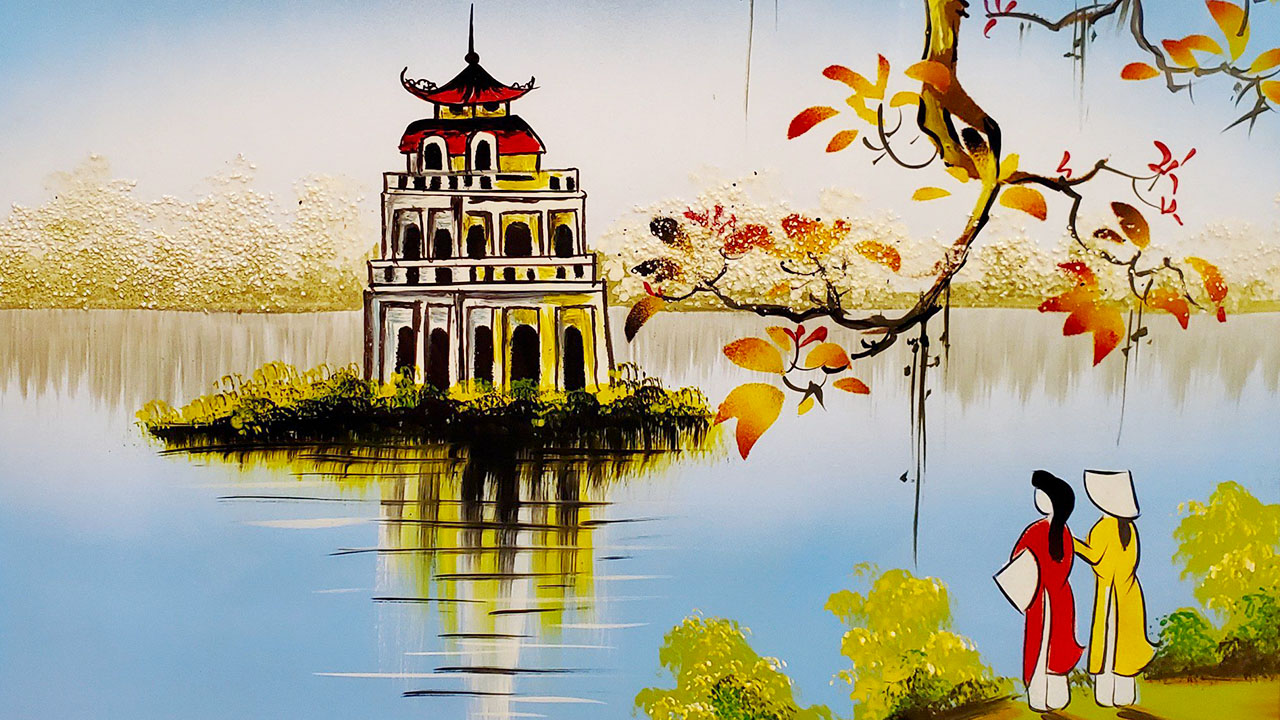
The tower’s integration into everyday cultural practices also extends to art and literature. Vietnamese poets, artists, and writers often draw inspiration from Turtle Tower, embedding its imagery into various forms of artistic expression. This creative lineage highlights the timeless allure and cultural resonance of Turtle Tower, blending historical reverence with creative ingenuity. Through artworks, poems, and stories, Turtle Tower perpetuates its legacy, ensuring that its cultural and historical essence is emphasized and celebrated for generations.
Moreover, the tower’s position in the heart of Hanoi makes it a part of the urban routine, acting as a daily reminder of Vietnam’s enriched cultural discourse. Locals and tourists alike flock to Hoan Kiem Lake, where the tower sits, not just to appreciate its architectural beauty but to engage with the layered narratives it embodies. Various local ceremonies around the lake often feature Turtle Tower as a backdrop, making it integral to the city’s ceremonial landscape.
Influence on local folklore and myths
The influence of Turtle Tower on local folklore and myths cannot be understated. It serves as the nucleus from which a myriad of stories and legends emanate, much like how Mount Olympus serves as the focal point in Greek mythology. The tower and its surrounding lake are often depicted as a realm of divine intervention, home to mystical entities like the giant golden turtle. These legends, passed down orally through generations, continue to fortify the tower’s mystique and cultural importance.
Local folklore often portrays the turtles of Hoan Kiem Lake as sentinels of wisdom and protection. The legendary turtles, with their spiritual and protective nuances, occupy a revered spot in the local imagination, fostering a sense of respect and veneration among people. Traditional Vietnamese beliefs often include the notion of nature spirits or ‘Thanh’ that are guardians of specific areas, and the majestic turtles are seen as the spiritual guardians of Hoan Kiem Lake. This belief enriches the cultural fabric of the city, making Turtle Tower not just a physical structure but a beacon of spiritual heritage.
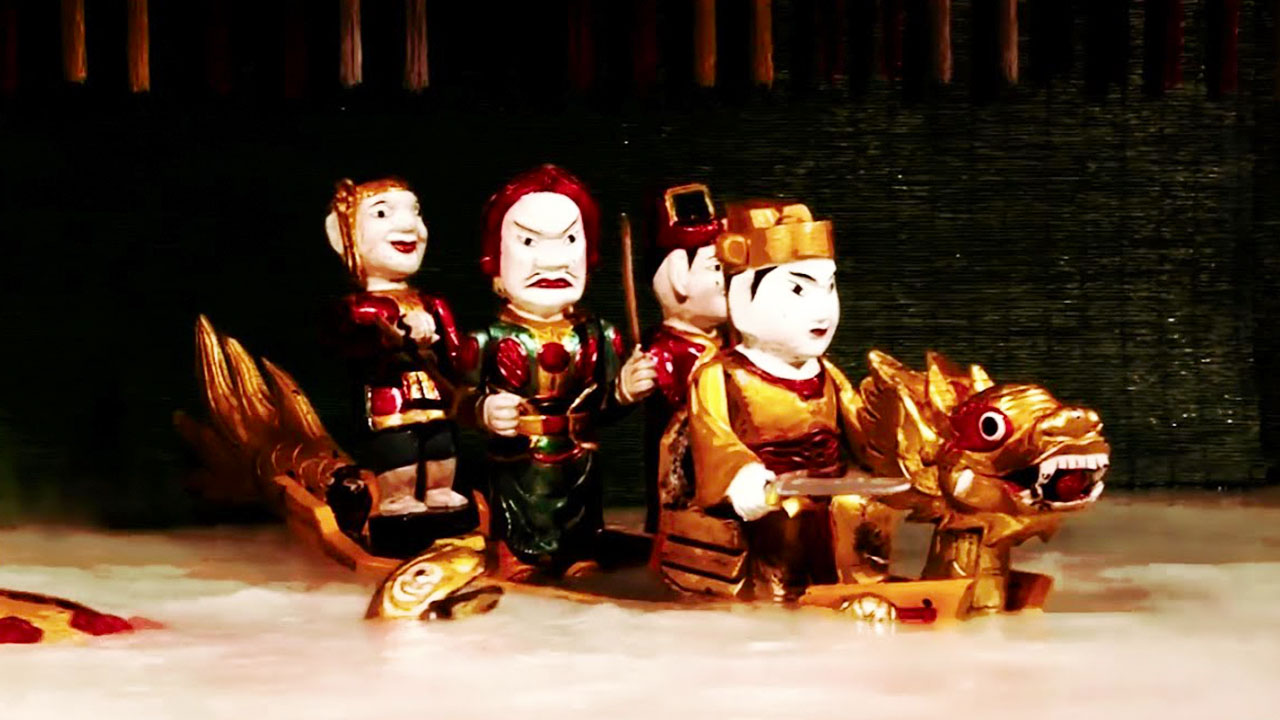
Furthermore, numerous literary and oral traditions in Vietnam weave in elements of the Turtle Tower mythology. Storytelling sessions in local villages, for instance, often recount tales of the divine turtle’s appearances and Le Loi’s return of the magical sword. These narratives serve an educational purpose, inculcating values of bravery, honesty, and reverence for nature in the younger generation. Much like how the tales of Robin Hood impart lessons of justice and charity, the legends involving Turtle Tower and the golden turtle impart values central to Vietnamese culture.
In addition to oral traditions, these myths and legends find their way into various forms of Vietnamese art and culture. Traditional Vietnamese water puppetry, a vital cultural art form, often incorporates scenes from the legend of the golden turtle. Puppetry scripts and performances bring these myths to life, ensuring the Tower’s legends remain deeply engrained in Vietnamese cultural consciousness. This artistic representation not only showcases the richness of Vietnam’s cultural traditions but also keeps the folklore surrounding Turtle Tower alive and vibrant.
Thus, the significance of Turtle Tower transcends its physical boundaries, permeating the cultural, artistic, and mythical landscape of Vietnam, connecting past legends with contemporary cultural expressions.
Architectural features of Turtle Tower
Turtle Tower’s architectural features are a testament to its historical and cultural grandeur. The structure reveals a beautiful synthesis of traditional Vietnamese and French colonial designs, representing a fusion of local aesthetics with foreign influences. This blend serves as a metaphor for Vietnam’s historical narrative a country shaped by external influences yet deeply rooted in its indigenous culture. The architectural marvel of Turtle Tower exemplifies this harmonious coexistence, establishing it as an enduring symbol of Hanoi’s heritage.
Design elements of Turtle Tower
The architectural design of Turtle Tower is a testament to the meld of Vietnamese tradition and French colonial influences. The tower’s three-storied structure tapers as it rises, invoking traditional Vietnamese design, while its arched doorways and ornate details speak to the French architectural impact. Each tier is slightly narrower than the one below, creating a striking visual tapering effect that enhances the tower’s elegance and majesty. The top tier resembles a tranquil gazebo, aligning with Eastern architectural motifs, thus preserving the essence of local architectural heritage.
The ground floor features multiple doors three on the eastern and western sides, and two on the northern and southern sides allowing natural light and ventilation to flood the interior, reflecting a meticulous consideration of functionality alongside aesthetic appeal. The upper floors replicate the lower one’s design but in a smaller scale, culminating in a circular doorway on the top floor facing east, symbolizing enlightenment and new beginnings.
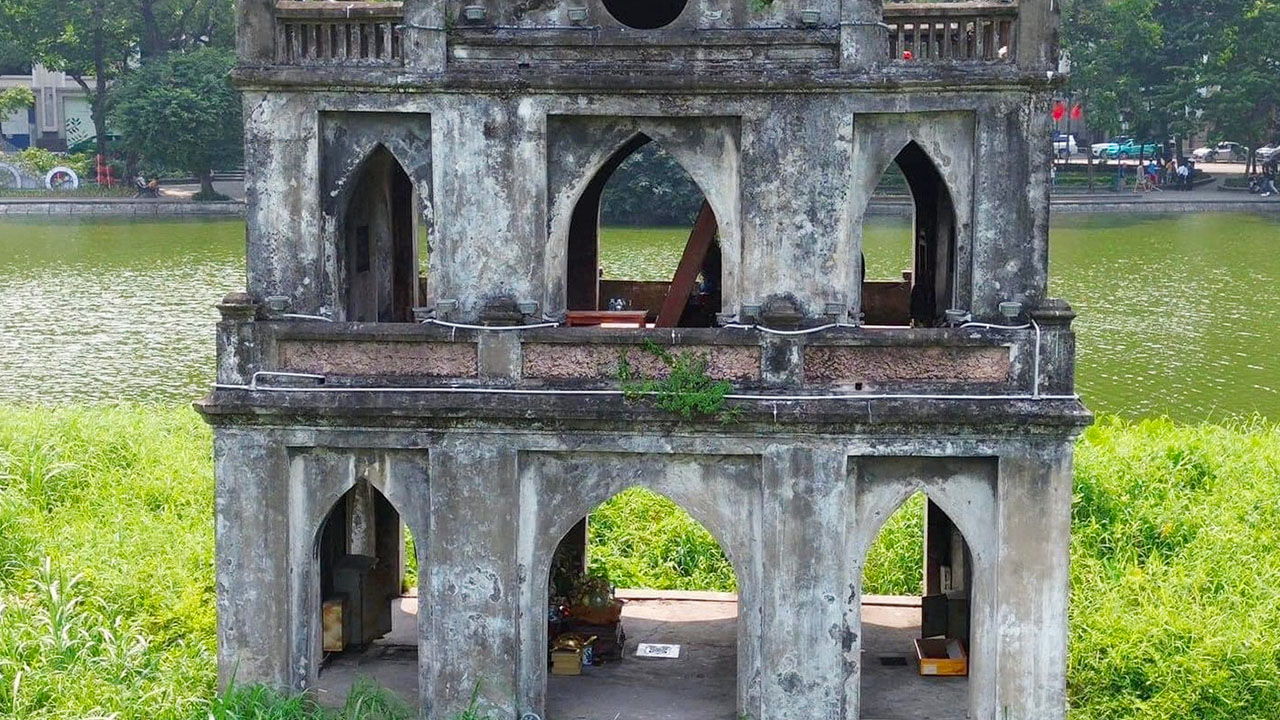
Symbolic motifs also adorn the tower, capturing the essence of Vietnamese iconography. The curved roofs, reminiscent of traditional pagodas, are decorated with dragon and phoenix motifs symbolizing power and prosperity. Furthermore, the Eastern architectural influences counterbalance with the more ornate European details, such as faux columns and intricate stucco.
The visual appeal of Turtle Tower extends to its nighttime grandeur when the structure is beautifully illuminated, casting a golden reflection on the serene waters of Hoan Kiem Lake. The shimmering reflection against the tranquil lake adds a magical touch, creating an evocative and enduring image that captures the imagination of locals and tourists alike.
The tower’s continuous restoration efforts reflect its dynamic history and the commitment to preserving this cultural landmark. While maintaining its historical essence, these efforts ensure that the softer details of the original design remain intact, offering a glimpse into the ingenuity of historical Vietnamese craftsmanship blended with colonial-style architecture.
Comparison with other architectural landmarks in Hanoi
In comparing Turtle Tower with other architectural landmarks in Hanoi, such as the Hanoi Opera House and the Temple of Literature, it’s evident how each structure contributes uniquely to the city’s cultural tapestry.
- Hanoi Opera House: This landmark stands as a prime example of French colonial architecture, characterized by its grandeur, intricate designs, and neoclassical inspirations. Built in the early 20th century, the Opera House features a grand façade, ornate pillars, and expansive interiors, speaking to the opulence typical of the period. Unlike Turtle Tower, which is modest in scale and steeped in mythological narratives, the Opera House represents Hanoi’s colonial past and its adoption of European cultural pursuits. While the Opera House impressively dominates the urban landscape, Turtle Tower’s charm lies in its serene, central location on an islet, offering a tranquil counterpoint to the bustling city.
- Temple of Literature: As Vietnam’s first national university, the Temple of Literature is a bastion of Confucian learning and traditional Vietnamese architecture. Established in the 11th century, the temple showcases classic Vietnamese design elements, such as wooden structures, curved roof tiles, and intricately carved details. Like Turtle Tower, the Temple of Literature is rich in historical significance but also holds educational and spiritual connotations, representing wisdom and scholarly pursuits. Turtle Tower’s physical simplicity contrasts with the temple’s elaborate courtyards and altars, yet both structures profoundly impact Hanoi’s cultural and architectural identity.
These landmarks collectively narrate Hanoi’s diverse historical and cultural journey. Each structure stands as a testament to different eras and influences French colonial, educational, and spiritual yet they coalesce to form a singular narrative that defines Hanoi’s rich heritage.
Preservation and restoration efforts
Preservation and restoration efforts for Turtle Tower accentuate the dedication to maintaining this cultural gem amidst modern urban developments. Originally built in 1886, the structure has undergone various restorations to preserve its historical integrity and architectural beauty. Such efforts reflect the local government and community’s commitment to safeguarding Hanoi’s heritage against the perils of environmental decay and urban expansion.
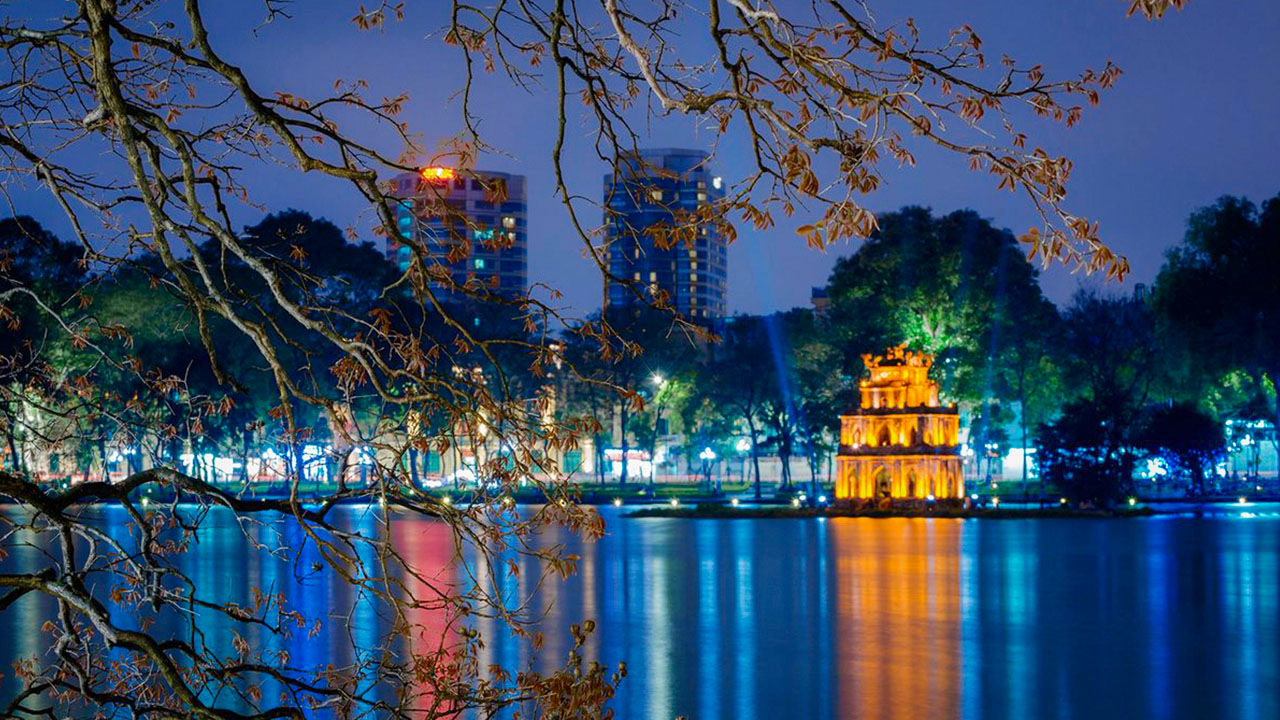
Restoration projects often focus on neutralizing the detriments caused by weather and water erosion, two significant factors compromising the tower due to its islet location. Specialists in historical preservation employ traditional techniques and materials consistent with the original construction to maintain its architectural authenticity. Similarly, layers of protective coating are applied to keep the structure resilient against environmental factors while preserving the patina of age that contributes to its historical allure.
Moreover, preservation efforts extend to enhancing the surrounding environment, ensuring that the cultural and aesthetic significance of Turtle Tower remains unfaltering. Efforts to clean and maintain the waters of Hoan Kiem Lake, facilitate pedestrian access, and foster environmental awareness all contribute to reinforcing the tower’s iconic status.
Community engagement also plays a crucial role in these preservation initiatives. Public awareness campaigns and educational programs are conducted to instill a sense of ownership and pride in local heritage, fostering a collective responsibility towards the conservation of this historic monument.
Turtle Tower as a tourist attraction
Turtle Tower, known as Tháp Rùa, is not just an emblem of historical and cultural significance but a major tourist attraction that draws visitors from around the world. Located on an islet in the tranquil expanse of Hoan Kiem Lake, it offers a unique destination where history, folklore, and natural beauty converge. The tower’s picturesque setting makes it a focal point for sightseeing in Hanoi, further enhanced by the vibrant surrounding areas, which include a variety of historical sites, bustling markets, and local eateries. It invites tourists to experience the rich tapestry of Vietnamese heritage through its captivating legends and serene ambiance, much like an oasis amidst the urban chaos.
Visitor experience at Turtle Tower
The visitor experience at Turtle Tower is enriched by its enchanting surroundings and the deeply rooted cultural narratives it embodies. As one approaches Hoan Kiem Lake, the tower emerges as a tranquil icon amidst the bustling urban landscape. The pristine setting of the lake, combined with the intricate architecture of the tower, creates a serene and contemplative environment, making it a favored spot for both local residents and international tourists.

Exploring Turtle Tower begins with a leisurely stroll around Hoan Kiem Lake. The pedestrian-friendly pathways encourage visitors to indulge in the scenic beauty while taking in various viewpoints of the tower. Early mornings and late afternoons are particularly recommended times to visit, as the gentle light casts beautiful reflections on the water, creating a picturesque panorama that is perfect for photography.
As tourists venture to the lakeside, they are often captivated by the sight of Turtle Tower, elegantly standing amidst the rippling waters. The tower’s three-tiered design, adorned with arched doorways and ornate details, invites admiration and inspires a sense of historical curiosity. Information plaques located around the lake provide insights into the tower’s history and the legendary tale of King Le Loi, enhancing the educational aspect of the visit.
Photographers and artists find Turtle Tower to be an endless source of inspiration. The interplay of light and shadow created by the surrounding foliage, combined with the tower’s architectural elegance, offers unique photographic opportunities. Visitors often capture the serene landscape, the vibrant sunsets, and the tower’s silhouette reflected in the calm waters moments that encapsulate the essence of Hanoi.
Additionally, the area around Hoan Kiem Lake is home to various cultural performances and events, especially during weekends and public holidays. Traditional music and dance performances, art exhibitions, and local craft displays often animate the lakeside, offering tourists a deeper dive into Vietnamese culture. The lively atmosphere, coupled with the historical backdrop of Turtle Tower, creates an immersive cultural experience.
The experience is further enhanced by the availability of amenities such as local cafes, seating areas, and rest facilities, ensuring a comfortable and enjoyable visit. Tourists can enjoy a cup of Vietnamese coffee while gazing at the tower, making for a perfect blend of relaxation and cultural exploration.
Events and festivals celebrated around Turtle Tower
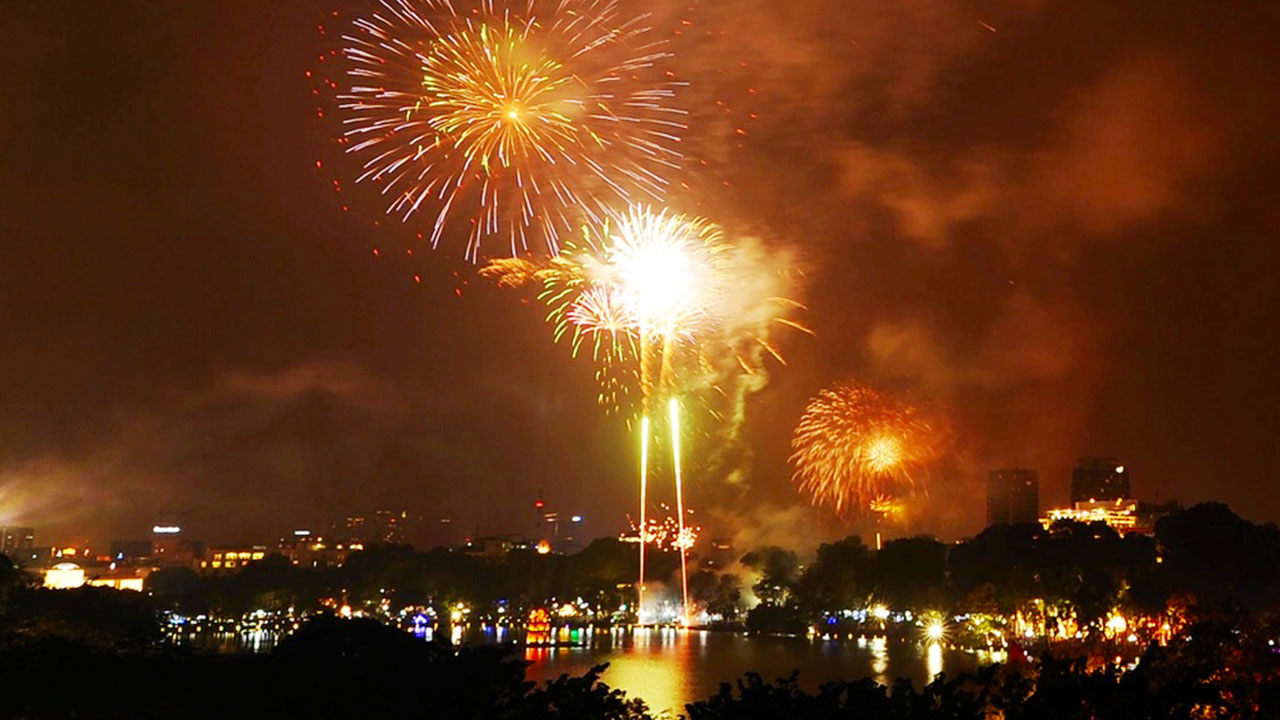
Events and festivals around Turtle Tower and Hoan Kiem Lake add vibrancy to the cultural landscape, drawing both locals and tourists to partake in communal celebrations. Although Turtle Tower does not host specific annual festivals directly, its surrounding lake serves as a popular venue for several events that highlight Vietnam’s cultural richness.
- Tet Festival (Lunar New Year): Tet is one of the most significant festivals in Vietnam, and Hoan Kiem Lake is the epicenter of celebrations in Hanoi. The lake and its surroundings are adorned with festive decorations, lanterns, and flower displays. Traditional performances, fireworks, and various cultural activities create a joyous atmosphere, attracting large crowds. Turtle Tower, illuminated beautifully during Tet, becomes an iconic backdrop for festivities, symbolizing prosperity and longevity.
- Mid-Autumn Festival: Celebrated with great enthusiasm, the Mid-Autumn Festival features lantern parades, lion dances, and mooncake stalls around Hoan Kiem Lake. The festival celebrates the harvest and family reunion, with children carrying colorful lanterns that often depict themes from Vietnamese folklore, including the legend of the golden turtle.
- Weekend Cultural Events: Hoan Kiem Lake transforms into a cultural hub during weekends. Traditional music and dance performances, art exhibits, and street food festivals bring the area to life. These events offer tourists an opportunity to engage with local culture, with Turtle Tower serving as a serene landmark amidst the lively activities.
Accessibility and local amenities
Accessibility and local amenities around Turtle Tower contribute to a comfortable and enriching visitor experience. Located in the heart of Hanoi, Turtle Tower is easily accessible by various modes of transportation, including walking, cycling, buses, and taxis. Public transportation options are well-integrated, with several bus routes stopping near Hoan Kiem Lake, making it convenient for both locals and tourists to visit.
The pedestrian-friendly pathways around Hoan Kiem Lake encourage walking tours, allowing visitors to explore the area at their own pace. These pathways are well-maintained and offer benches for resting, ensuring a leisurely and enjoyable experience. Cycling enthusiasts can also rent bikes to navigate the lake’s perimeter, enjoying the scenic beauty while engaging in a physical activity.
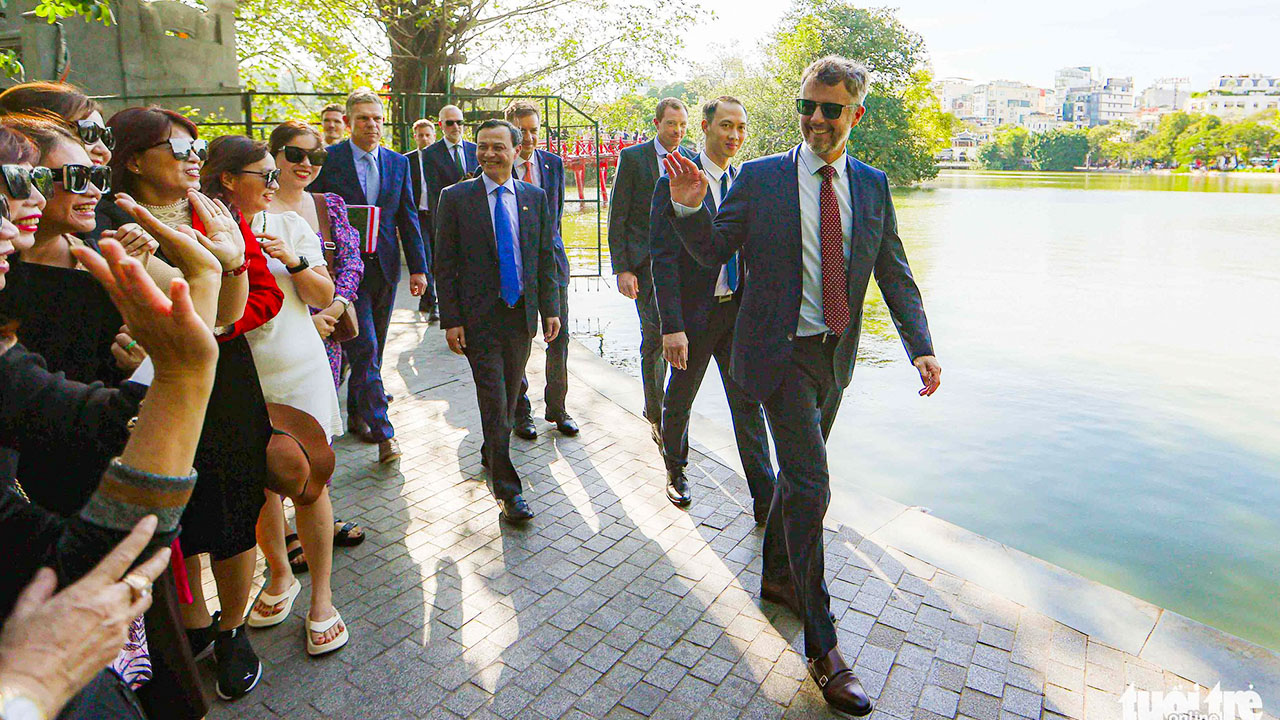
The surrounding area is rich with local amenities, further enhancing the visitor experience. Numerous restaurants, cafes, and street food stalls offer a wide array of culinary delights, from traditional Vietnamese dishes to international cuisine. Popular local eateries such as Pho Bo (beef noodle soup) and Banh Mi (Vietnamese baguette) are readily available, providing tourists with an authentic taste of Hanoi.
Shops and markets around Hoan Kiem Lake offer a variety of souvenirs, handicrafts, and local products. From conical hats and silk scarves to lacquerware and pottery, visitors can find unique items that embody Vietnamese craftsmanship and culture. Additionally, public restrooms and information kiosks are strategically located to assist visitors, ensuring convenience and accessibility.
Local tour guides and informational brochures are available near Hoan Kiem Lake, providing insights into the history and significance of Turtle Tower and other nearby landmarks. Guided tours offer a comprehensive understanding of the area’s cultural and historical context, enriching the overall experience.
The seamless blend of accessibility, amenities, and cultural attractions makes visiting Turtle Tower a multifaceted and delightful experience. Tourists can immerse themselves in Hanoi’s rich heritage, savor local flavors, and appreciate the serene beauty of Turtle Tower, all within a well-facilitated and welcoming environment.
Symbolism of Turtle Tower
Turtle Tower, or Tháp Rùa, is more than just an architectural landmark; it is a rich symbol of Vietnamese values, embodying themes of resilience, wisdom, and cultural identity. Its symbolic significance is deeply intertwined with the historical and mythological narratives that surround it, making it a revered icon in Vietnamese culture. The tower’s presence in the heart of Hanoi’s bustling urban landscape serves as aconstant reminder of the enduring spirit of the Vietnamese people and their connection to their past. As both a cultural beacon and historical monument, Turtle Tower represents several core Vietnamese values and ideals, blending folklore, history, and national identity into a powerful symbol.
Representation of vietnamese values
Turtle Tower encapsulates core Vietnamese values through its architectural presence and the legends associated with it. Primarily, it symbolizes resilience and endurance, mirroring the Vietnamese people’s storied history of overcoming adversity and maintaining their sovereignty. The myth of King Le Loi and the Returned Sword epitomizes the fortitude and patriotic spirit that has characterized Vietnam’s historical journey. Just as sturdy as the iconic turtles it denotes, the tower stands as a testament to the persistence and tenacity essential to the nation’s identity.
Another critical aspect of the tower’s symbolism is its representation of wisdom and longevity. The divine turtle in the legend is a guardian figure, dispensing the magical sword and symbolizing knowledge, protection, and enduring wisdom. In Vietnamese culture, the turtle is a revered creature, embodying a long life filled with accumulated wisdom. Turtle Tower, therefore, not only commemorates a pivotal historical event but also connects present-day Vietnamese to the enduring wisdom of their ancestors.
Additionally, the tower reflects cultural synthesis and the value of adaptability. Constructed during the French colonial era, Turtle Tower showcases a blend of traditional Vietnamese architectural elements with European (French colonial) influences. This architectural fusion symbolizes Vietnam’s ability to adapt and absorb different cultural influences while retaining its unique identity. The tower’s ability to maintain its historical significance and architectural integrity despite external influences mirrors the Vietnamese capacity to integrate and persevere through diverse cultural waves.
Lastly, Turtle Tower stands as a symbol of peace and unity, further highlighted by its serene location in the middle of Hoan Kiem Lake. Much like the still waters of the lake that reflect its image, the tower evokes a sense of calm and harmony in the midst of urban chaos. The legend of the Returned Sword, which emphasizes returning a powerful weapon to its rightful protector, underscores the theme of obtaining peace through wisdom and rightful action.
Turtle as a national symbol in Vietnam
The turtle holds a significant position as a national symbol in Vietnam, closely tied to the country’s cultural myths, historical narratives, and environmental consciousness. The legend of Turtle Tower and the divine turtle at Hoan Kiem Lake amplify this symbolism, establishing the turtle as a revered figure in Vietnamese folklore and national identity.
In Vietnamese culture, turtles symbolize longevity, stability, and intelligence, reflecting the qualities needed for national endurance and continuous growth. The turtles of Hoan Kiem Lake, particularly the famed Rafetus leloii, have come to represent the spiritual essence of Vietnam, translating ecological presence into cultural significance. These turtles were believed to be ancient guardians of the lake, bestowing divine protection and insight, thus aligning with broader themes of patience, wisdom, and steadfastness.
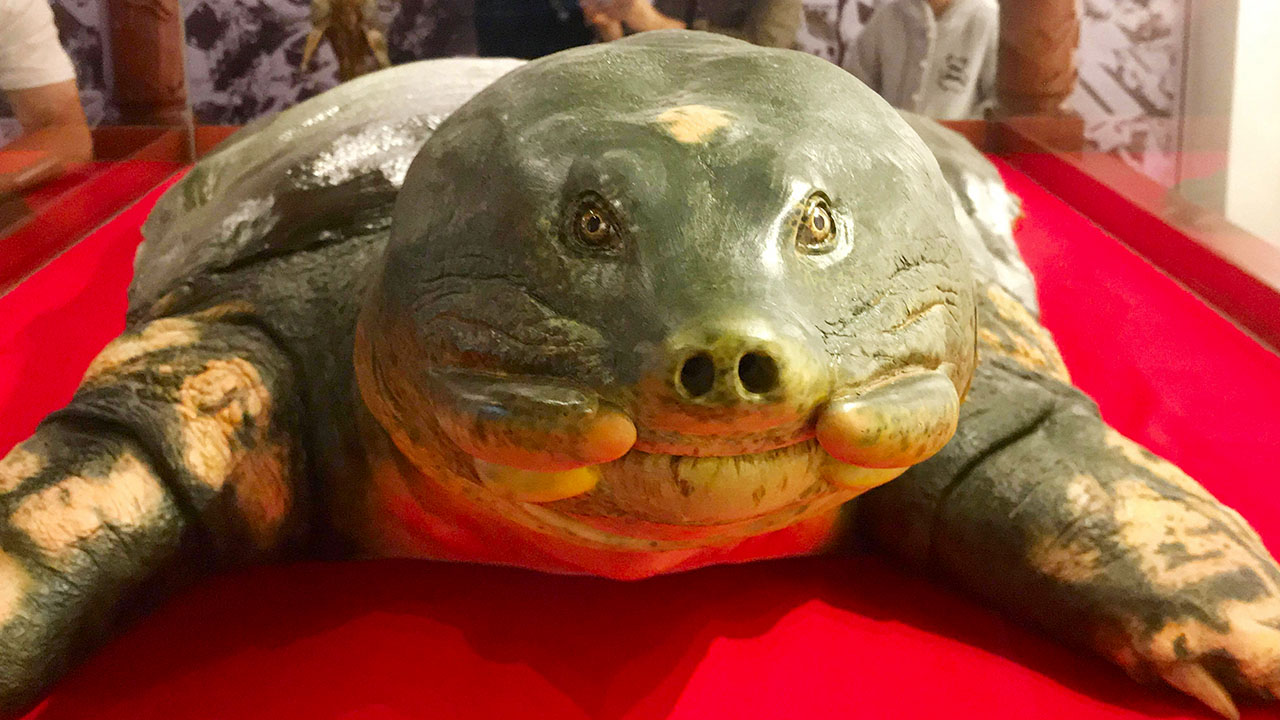
The tale of King Le Loi returning the magical sword to the turtle enhances the symbolic stature of the turtle, representing victory, divine favor, and rightful leadership. This narrative celebrates the idea of divine intervention aiding in the preservation of national sovereignty and the bond between humans and mystical entities, fostering a sense of unity and shared destiny. It suggests that true leadership incorporates wisdom and respect for nature, aligning human actions with ecological balance and moral righteousness.
Moreover, the turtle as a national symbol extends to modern environmental consciousness and conservation efforts. Recognizing the historical and cultural importance of these creatures, Vietnam has initiated efforts to protect and preserve the remaining Rafetus leloii turtles and their habitat in Hoan Kiem Lake. This environmental movement underscores a broader national commitment to maintaining the balance between development and ecological integrity, reflecting an enduring respect for the natural world imbued with cultural and historical meaning.
The presence of Turtle Tower and the reverence for the symbolic turtle reflect a commitment to preserving cultural heritage and fostering a deep connection between past, present, and future generations. The turtle, along with the tower, stands as a testament to Vietnam’s historical resilience, ecological awareness, and the continuous narrative of its cultural identity.
Connection to Hoan Kiem Lake’s ecosystem
Turtle Tower’s location in Hoan Kiem Lake is not only of cultural and historical significance but also contributes substantially to the ecological framework within Hanoi. Hoan Kiem Lake, with its lush green surroundings and tranquil waters, serves as a vital green space in the heart of the city, promoting biodiversity and environmental health amidst urban sprawl.
The lake’s ecosystem supports a variety of aquatic plants and animal species, fostering a balanced environment that is crucial for maintaining local biodiversity. The presence of native species like the endangered Rafetus leloii highlights the lake’s ecological importance. These soft-shelled turtles are integral to both the mythological and environmental narrative of Hoan Kiem Lake, representing the symbiotic relationship between culture and nature.
The health of Hoan Kiem Lake is pivotal for the survival of these turtles, emphasizing the need for ongoing conservation initiatives. Efforts to clean and maintain the lake’s waters help preserve this unique habitat, ensuring a sustainable environment for future generations. Furthermore, the lake acts as a critical water body that mitigates urban heat, reduces air pollution, and provides a refreshing counterpoint to the dense urban landscape.
The connection between Turtle Tower and its surrounding ecosystem underscores the broader theme of harmony between humans and nature. The serene environment around the lake, punctuated by the towering presence of Tháp Rùa, invites reflection on the importance of balance in ecological systems. The continuous efforts to preserve and enhance this natural space reflect a deep-seated cultural consciousness that values sustainability and respect for natural heritage.
Educational programs and environmental awareness campaigns conducted around Hoan Kiem Lake further bolster this ecological focus. These initiatives aim to instill a sense of responsibility and appreciation among local residents and tourists for the natural beauty and ecological significance of the area. Through these combined efforts, Turtle Tower and Hoan Kiem Lake stand not only as symbols of historical and cultural heritage but also as beacons of ecological awareness and sustainable practices.
Related landmarks and attractions
Surrounding Turtle Tower are several related landmarks and attractions that create a rich cultural and historical experience for visitors. The scenic Hoan Kiem Lake provides a perfect backdrop for exploring the many other significant sites in the vicinity, making it a hub of activity and cultural immersion.

Nearby historical sites
- Ngoc Son Temple: Situated on an island in Hoan Kiem Lake, connected to the shore by the iconic The Huc Bridge, Ngoc Son Temple is dedicated to General Tran Hung Dao and the deity Van Xuong. The temple’s intricate architecture and serene location make it a significant cultural and spiritual site. Visitors can explore its beautiful courtyards, altars, and historical artifacts while enjoying panoramic views of the lake and Turtle Tower.
- The Huc Bridge: Known for its bright red color, The Huc Bridge is a charming wooden structure that leads to Ngoc Son Temple. Symbolizing good fortune and happiness, the bridge is an essential stop for photographers and tourists seeking picturesque views of Hoan Kiem Lake. Its graceful curve over the water creates a perfect vantage point to capture the scenic beauty and tranquility of the area.
- Tháp Bút (Pen Tower): Located northeast of Turtle Tower, Pen Tower is dedicated to literature and marks the contributions of Vietnamese writers. Shaped like a giant pen, it is a tribute to the importance of literature and learning in Vietnamese culture. Visitors can admire its symbolic design and reflect on the prominence of literary heritage in the area.
- Hanoi Post Office: A stunning example of French colonial architecture, the Hanoi Post Office is situated near Hoan Kiem Lake. Built in the early 20th century, it features neoclassical and Art Deco elements, making it an architectural masterpiece. As both a functioning post office and a historical landmark, it attracts visitors who wish to appreciate its grandeur while exploring Hanoi’s colonial past.
- Ly Thai To Flower Garden: Adjacent to the Hanoi Post Office, this public park is dedicated to Ly Thai To, the founder of the Ly Dynasty. The garden offers a peaceful retreat with beautifully landscaped flowers and green spaces, providing a scenic break from the hustle and bustle of the city. The historical significance and charming atmosphere make it a popular spot for relaxation and reflection.
- Old Quarter: A short walk from Turtle Tower, Hanoi’s Old Quarter is a bustling area filled with narrow streets, shops, food stalls, and historical buildings. Known for its preserved architecture and vibrant street life, the Old Quarter offers an authentic experience of Hanoi’s daily life and cultural richness. Visitors can explore traditional markets, taste local cuisine, and witness the fusion of old and new in this lively district.
Cultural sites in the hoan kiem district
Cultural sites in Hoan Kiem District offer a deep dive into Hanoi’s rich history, architectural beauty, and vibrant culture. These sites create a cohesive narrative that reflects the area’s significant cultural and historical heritage.
- Hoan Kiem Lake: At the heart of the district, Hoan Kiem Lake is celebrated for its beauty and the legend of King Le Loi. It serves as a communal space where locals and tourists gather to relax, socialize, and participate in various activities. The lake’s serene environment and cultural significance make it an essential part of Hanoi’s identity.
- Ngoc Son Temple: A symbol of spiritual reverence, Ngoc Son Temple is a prominent cultural landmark located on an island in Hoan Kiem Lake. The temple’s architecture combines Buddhist, Confucian, and Taoist styles, making it a unique representation of Vietnamese spiritual heritage. Visitors can explore its serene courtyards and admire its historical artifacts.
- The Huc Bridge: As an architectural gem and cultural symbol, The Huc Bridge connects Ngoc Son Temple to the lakeshore. Its bright red hue and elegant design make it a popular photo spot and a testament to Hanoi’s architectural beauty.
- St. Joseph’s Cathedral: Constructed in 1886, St. Joseph’s Cathedral is a stunning example of neo-gothic architecture. Often compared to Notre Dame in Paris, the cathedral features pointed arches, tall spires, and intricate stained glass windows. It is a key cultural and historical site in Hoan Kiem District, attracting visitors who appreciate its architectural grandeur and historical significance.
- Hanoi Opera House: An architectural masterpiece, the Hanoi Opera House showcases neoclassical design and has been a cultural hub for performances of opera, ballet, and classical music. Built in 1911, the opera house represents the artistic heritage of Hanoi and stands as a shining example of French colonial architecture in Vietnam.
Ecological significance of Hoan Kiem Lake
Hoan Kiem Lake, beyond its cultural and historical importance, holds significant ecological value within Hanoi. The lake serves as a vital green space, promoting biodiversity and providing a natural retreat amidst the urban environment.
- Biodiversity Conservation: The lake’s ecosystem supports a variety of wildlife, contributing to local biodiversity. The presence of the endangered soft-shelled turtle, Rafetus leloii, underscores the lake’s ecological significance and the need for conservation efforts to sustain this unique habitat.
- Urban Green Space: As an expansive green area, Hoan Kiem Lake mitigates urban heat, reduces air pollution, and offers a refreshing contrast to the densely built cityscape. The lake and its surrounding greenery provide a natural space for recreational activities such as walking, jogging, and Tai Chi, promoting physical well-being.
- Environmental Awareness: Initiatives to preserve and maintain Hoan Kiem Lake foster environmental awareness among locals and tourists. Educational programs and conservation campaigns aim to protect the lake’s ecosystem, ensuring its health and vitality for future generations.
- Aesthetic and Recreational Value: The serene environment of Hoan Kiem Lake, enriched by the presence of Turtle Tower, offers aesthetic and recreational pleasure to visitors. The tranquil waters, lush greenery, and scenic views create a peaceful setting for relaxation and contemplation.
Together, these attributes make Hoan Kiem Lake an essential ecological asset within Hanoi, highlighting the importance of integrating cultural heritage with environmental sustainability.
Turtle tower in popular media
While Turtle Tower may not be as prominently featured in global popular media as other significant landmarks, its presence in Vietnamese culture and digital platforms ensures it remains an essential emblem of Hanoi’s heritage.
Depictions in literature and films
Turtle Tower, embedded in Vietnamese cultural narratives, is reflected in the literature and folklore of Hanoi, though it has yet to achieve broad international recognition in popular films or mainstream literature. However, its symbolic and historical significance ensures its prominent place within Vietnamese storytelling.
In Vietnamese literature, the legend of King Le Loi returning the magical sword to the divine turtle is a common theme. This powerful narrative of divine intervention, victory, and unity is explored in various literary works, illustrating the deep-rooted cultural significance of the turtle and the tower. The legend encapsulates moral lessons of humility, rightful governance, and respect for nature, serving as an enduring source of inspiration for writers and poets.
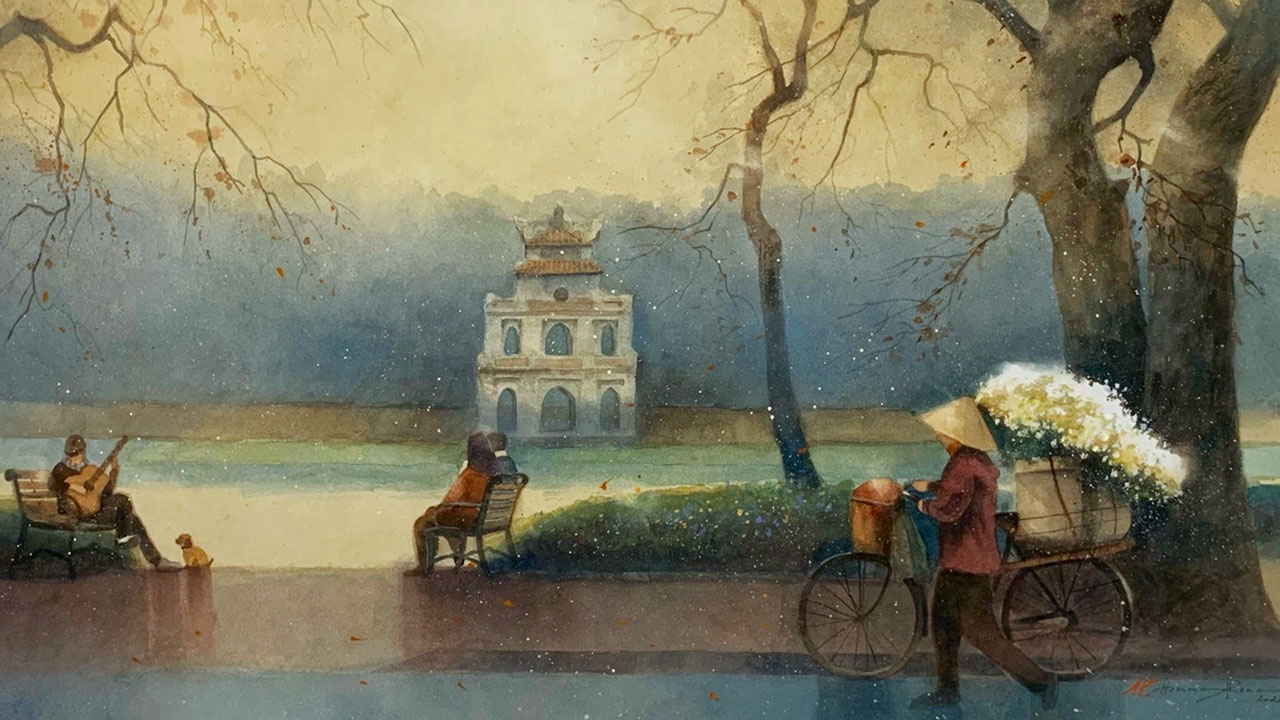
While broader popular media might not extensively feature Turtle Tower, the essence of its legend contributes to the rich tapestry of Vietnamese historical fiction and folklore. This localized prominence ensures that Turtle Tower remains a pivotal reference point in cultural narratives, maintaining its value and significance.
The imagery of Turtle Tower also permeates contemporary Vietnamese storytelling, whether in poetry, children’s tales, or educational literature. These narratives continue to pass down the legend to future generations, preserving the cultural heritage associated with the tower and its mythological background.
Artwork and photography of turtle tower
Turtle Tower is a captivating subject for artists and photographers, making it a popular motif in Vietnamese art and photography. The tower’s unique architectural style, combined with its picturesque location in Hoan Kiem Lake, provides endless opportunities for visual representation.
- Artistic Renderings: Artists capture the tower’s serene beauty through various mediums, including paintings, sketches, and digital art. Traditional and modern interpretations can be found in galleries, markets, and exhibitions, showcasing the tower’s continued relevance in Vietnamese artistic expression. The blending of architectural details with natural surroundings in these works highlights the tower’s symbolic importance and aesthetic appeal.
- Photography: Turtle Tower’s picturesque setting makes it a favored subject for photographers. The reflection of the tower on the tranquil waters of Hoan Kiem Lake, particularly during sunrise or sunset, creates stunning visual compositions that are widely shared on social media platforms like Instagram. Photographers often utilize the interplay of light, shadow, and natural elements to create compelling images that resonate with viewers.
- Cultural Representation: Artwork and photography of Turtle Tower are not limited to aesthetic appreciation but also serve as cultural documentation. These visual representations capture the essence of Hanoi, preserving its historical and cultural landscape. The tower’s place in the city’s daily life, reflected in photographs and art, reinforces its status as an iconic symbol of Vietnam.
Social media representation and influence
In the digital age, social media has become a powerful platform for showcasing cultural landmarks like Turtle Tower. With the rise of platforms such as Instagram, Facebook, and TikTok, Turtle Tower has gained considerable visibility, attracting tourists and engaging audiences worldwide.
- Instagram Influence: Photos of Turtle Tower frequently appear on Instagram, often accompanied by hashtags like #TurtleTower, #HoanKiemLake, and #Hanoi. Travel influencers and photographers capture the tower’s beauty, sharing their experiences and inspiring others to visit. These posts contribute to the cultural narrative, emphasizing the tower’s significance and creating a virtual community of admirers.
- Facebook and Travel Blogs: Facebook pages and travel blogs dedicated to Hanoi and its attractions often feature Turtle Tower, highlighting its historical and cultural importance. These platforms provide detailed information, travel tips, and personal anecdotes, enriching the visitor’s understanding and appreciation of the landmark. The interactive nature of social media allows for sharing experiences, discussing the cultural significance, and coordinating visits.
- TikTok and Short Videos: The visual and engaging nature of platforms like TikTok presents opportunities to explore Turtle Tower through short videos. Creators use this medium to share stories, historical facts, and visual tours, making the cultural and historical narratives accessible to a broader audience. These videos often capture the tower’s charm and the surrounding lake’s ambiance, making it appealing to younger generations.
The influence of social media ensures that Turtle Tower remains a dynamic and celebrated symbol of Hanoi, fostering a connection between local heritage and global audiences. Through digital representation, the tower’s legacy continues to thrive, inspiring curiosity and appreciation for Vietnamese culture and history.
Conclusion
Turtle Tower, or Tháp Rùa, stands as an enduring symbol of Hanoi’s rich cultural tapestry, blending historical significance with mythological depth. Its architectural elegance, coupled with its poignant legends involving King Le Loi and the divine turtle, underscores its prominence in Vietnamese heritage. The tower’s serene location in Hoan Kiem Lake further amplifies its beauty, serving as both a cultural landmark and a tranquil retreat amidst the urban sprawl.
Preservation and restoration efforts highlight the community’s commitment to maintaining Turtle Tower’s historical integrity, ensuring future generations can appreciate this emblematic structure. The tower’s role extends beyond architecture; it embodies core Vietnamese values such as resilience, wisdom, and cultural synthesis. Moreover, the turtle’s symbolism as a national icon reiterates themes of longevity, stability, and ecological consciousness, enriching the cultural narrative.
Adjacent landmarks like Ngoc Son Temple, The Huc Bridge, and Hanoi’s Old Quarter collectively enhance the visitor experience, offering a comprehensive dive into Hanoi’s historical and cultural richness. Events and festivals around Hoan Kiem Lake further animate the area, drawing locals and tourists to engage in communal celebrations and cultural performances.
In popular media, Turtle Tower’s presence, while not extensively documented globally, remains significant in Vietnamese literature, art, and digital representation. Its captivating imagery continues to inspire artists and photographers, while social media platforms amplify its visibility, connecting cultural heritage to a global audience.
Ultimately, Turtle Tower (Tháp Rùa) is much more than an architectural relic it’s a symbol of Vietnam’s enduring spirit, cultural resilience, and historical continuity. Standing proudly in the heart of Hanoi, it invites all who visit to reflect on its stories, draw inspiration from its beauty, and appreciate the profound legacy it represents.


